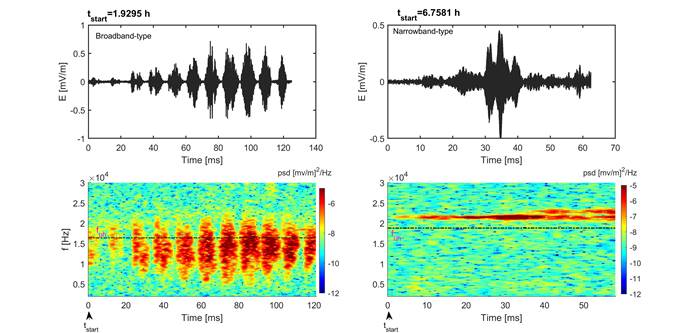Ministry of Science & Technology
High-frequency waves detected in the Martian Upper Atmosphere could help understand plasma processes over Mars
प्रविष्टि तिथि:
05 JAN 2024 6:29PM by PIB Delhi
Scientists have detected existence of high-frequency plasma waves in the Martian Upper Atmosphere with novel narrowband and broadband features that can help to understand plasma processes in the Martian plasma environment.
Various plasma waves are often observed in the Earth’s magnetosphere, a magnetic field cavity around the Earth. In general, plasma waves are identified as the short-time scale fluctuations in the in the electric and magnetic field observations. These plasma waves play an important role in the energization and transport of the charged particles in the Earth’s magnetosphere. Some of the plasma waves like electromagnetic ion cyclotron waves act as a cleaning agent for the Earth’s radiation belt, which is hazardous to our satellites. Knowing this scenario, researchers are curious to understand the existence of various plasma waves in the vicinity of unmagnetized planets like Mars. The planet Mars do not have any intrinsic magnetic field therefore the high-speed solar wind coming from the Sun interacts directly with the Mars atmosphere, like an obstacle in the flow.
The researchers at Indian Institute of Geomagnetism (IIG), an autonomous institute of Department of Science and Technology have examined the existence of high-frequency plasma waves in the Martian plasma environment by making use of the high-resolution electric field data from the Mars Atmosphere and Volatile Evolution Mission (MAVEN) spacecraft of NASA (https://pds-ppi.igpp.ucla.edu). These waves could be either electron oscillations that propagate parallel to the background magnetic field (Langmuir waves) or electron oscillations that propagate perpendicular to the background magnetic field (upper-hybrid type waves) in the magnetosheath region of the Mars.
They observed two distinct wave modes with frequency below and above the electron plasma frequency in the Martian magnetosphere. These waves were observed around 5 LT (local time) on February 9, 2015, when the MAVEN spacecraft crossed the magnetopause boundary and entered the magnetosheath region. These waves are either broadband- or narrowband-type with distinguishable features in the frequency domain. The broadband waves were consistently found to have periodic patchy structures with a periodicity of 8–14 milliseconds.
Observations of such waves provide a tool to explore how electrons gain or dissipate energy in the Martian plasma environment. The physical mechanism responsible for the generation of broadband-type waves and its modulation remains unexplained and further investigation is required. This study was carried out by IIG scientists in collaboration with scientists from Japan, USA, and UAE and it has been published in Astronomy & Astrophysics Journal.
Publication link: https://www.aanda.org/articles/aa/pdf/2023/11/aa44756-22.pdf
For more details, please contact Dr. Amar Kakad, email: amar.kakad@iigm.res.in, Phone: +91-22-27484188.

Figure 1: Upper panels show electric field as a function of time and their respective spectrograms are shown in the lower panels. The left-side panels are for broadband type and the right-side panels are for narrowband type high-frequency waves. These high-frequency waves were observed on February 9, 2015.
*****
SNC/ST
(रिलीज़ आईडी: 1993601)
आगंतुक पटल : 2380